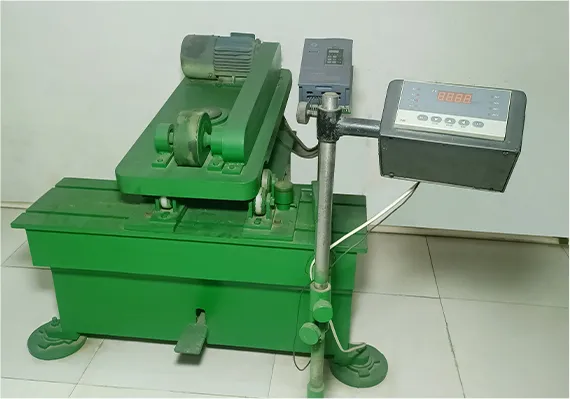 Afrikaans
Afrikaans  Albanian
Albanian  Amharic
Amharic  Arabic
Arabic  Armenian
Armenian  Azerbaijani
Azerbaijani  Basque
Basque  Belarusian
Belarusian  Bengali
Bengali  Bosnian
Bosnian  Bulgarian
Bulgarian  Catalan
Catalan  Cebuano
Cebuano  Corsican
Corsican  Croatian
Croatian  Czech
Czech  Danish
Danish  Dutch
Dutch  English
English  Esperanto
Esperanto  Estonian
Estonian  Finnish
Finnish  French
French  Frisian
Frisian  Galician
Galician  Georgian
Georgian  German
German  Greek
Greek  Gujarati
Gujarati  Haitian Creole
Haitian Creole  hausa
hausa  hawaiian
hawaiian  Hebrew
Hebrew  Hindi
Hindi  Miao
Miao  Hungarian
Hungarian  Icelandic
Icelandic  igbo
igbo  Indonesian
Indonesian  irish
irish  Italian
Italian  Japanese
Japanese  Javanese
Javanese  Kannada
Kannada  kazakh
kazakh  Khmer
Khmer  Rwandese
Rwandese  Korean
Korean  Kurdish
Kurdish  Kyrgyz
Kyrgyz  Lao
Lao  Latin
Latin  Latvian
Latvian  Lithuanian
Lithuanian  Luxembourgish
Luxembourgish  Macedonian
Macedonian  Malgashi
Malgashi  Malay
Malay  Malayalam
Malayalam  Maltese
Maltese  Maori
Maori  Marathi
Marathi  Mongolian
Mongolian  Myanmar
Myanmar  Nepali
Nepali  Norwegian
Norwegian  Norwegian
Norwegian  Occitan
Occitan  Pashto
Pashto  Persian
Persian  Polish
Polish  Portuguese
Portuguese  Punjabi
Punjabi  Romanian
Romanian  Russian
Russian  Samoan
Samoan  Scottish Gaelic
Scottish Gaelic  Serbian
Serbian  Sesotho
Sesotho  Shona
Shona  Sindhi
Sindhi  Sinhala
Sinhala  Slovak
Slovak  Slovenian
Slovenian  Somali
Somali  Spanish
Spanish  Sundanese
Sundanese  Swahili
Swahili  Swedish
Swedish  Tagalog
Tagalog  Tajik
Tajik  Tamil
Tamil  Tatar
Tatar  Telugu
Telugu  Thai
Thai  Turkish
Turkish  Turkmen
Turkmen  Ukrainian
Ukrainian  Urdu
Urdu  Uighur
Uighur  Uzbek
Uzbek  Vietnamese
Vietnamese  Welsh
Welsh  Bantu
Bantu  Yiddish
Yiddish  Yoruba
Yoruba  Zulu
Zulu conveyor belt scraper
The Importance of Conveyor Belt Scrapers in Material Handling Systems
In industries ranging from mining to food processing, conveyor belts serve as the backbone of material handling systems. The efficiency and reliability of these systems are largely determined by the performance and maintenance of the conveyor belts themselves. One critical component that often goes overlooked is the conveyor belt scraper. This article explores the significance of conveyor belt scrapers, their functions, types, and the benefits they provide to various industries.
Understanding Conveyor Belt Scrapers
Conveyor belt scrapers are essential devices designed to remove bulk material that adheres to the surface of conveyor belts. These materials can include dirt, dust, mud, and any other residues that may be transported along with the primary materials. If not effectively removed, these residues can lead to several operational issues, including reduced efficiency, increased wear on machinery, and potential accidents.
Functions of Conveyor Belt Scrapers
The primary function of a conveyor belt scraper is to ensure that the belt remains clean throughout its operation. Cleaning the belt prevents the buildup of materials that can cause slippage, misalignment, and damage to the belt itself. Additionally, a clean conveyor belt promotes a safer workplace by minimizing dust and debris that could pose hazards to workers.
Another important function is to enhance the overall efficiency of the material handling system. A clean belt allows for smoother operation, reducing the likelihood of downtime caused by clogged or obstructed systems. This not only improves productivity but also extends the lifespan of the conveyor belt by reducing unnecessary wear and tear.
Types of Conveyor Belt Scrapers
There are several types of conveyor belt scrapers, each designed to address specific cleaning requirements and operating conditions
. The two most common categories include1. Primary Scrapers These are typically installed at the discharge point of the conveyor system. They are designed to remove the bulk of material from the conveyor belt as it leaves the system. Primary scrapers can be made from various materials, including rubber, metal, or composite materials, depending on the application and the type of material being transported.
conveyor belt scraper

2. Secondary Scrapers Installed further along the belt, secondary scrapers provide additional cleaning to ensure that any residual material remaining after the primary scraper is effectively removed. These scrapers are usually more flexible and can adapt to various belt surfaces and conditions to maintain optimal cleanliness.
Benefits of Using Conveyor Belt Scrapers
1. Improved Efficiency By regularly cleaning the conveyor belt, scrapers help maintain optimal material flow, reducing the need for downtime and increasing overall system productivity.
2. Reduced Maintenance Costs Keeping the conveyor belt clean reduces wear and tear on the belt and associated components, leading to lower maintenance costs and extending the equipment's lifespan.
3. Enhanced Safety A clean working environment minimizes hazards related to slipping and falling caused by debris and reduces the risk of fire hazards due to excessive dust buildup.
4. Environmental Compliance Many industries are now subject to strict environmental regulations regarding dust and debris management. Effective conveyor belt scrapers help companies comply with these regulations, aiding in sustainable operations.
5. Cost Savings The cumulative effect of improved efficiency and reduced maintenance needs leads to significant cost savings over time, making conveyor belt scrapers a valuable investment for many industries.
Conclusion
In conclusion, conveyor belt scrapers play a pivotal role in the efficiency and safety of material handling systems across various industries. By effectively removing contaminants from the conveyor belt, these scrapers enhance performance, extend equipment life, and create a safer workplace. Companies looking to optimize their material handling processes should prioritize the installation and maintenance of effective conveyor belt scrapers. As machinery and technology continue to advance, the integration of high-quality scrapers will remain essential for the success and sustainability of industrial operations.
-
Revolutionizing Conveyor Reliability with Advanced Rubber Lagging PulleysNewsJul.22,2025
-
Powering Precision and Durability with Expert Manufacturers of Conveyor ComponentsNewsJul.22,2025
-
Optimizing Conveyor Systems with Advanced Conveyor AccessoriesNewsJul.22,2025
-
Maximize Conveyor Efficiency with Quality Conveyor Idler PulleysNewsJul.22,2025
-
Future-Proof Your Conveyor System with High-Performance Polyurethane RollerNewsJul.22,2025
-
Driving Efficiency Forward with Quality Idlers and RollersNewsJul.22,2025





























